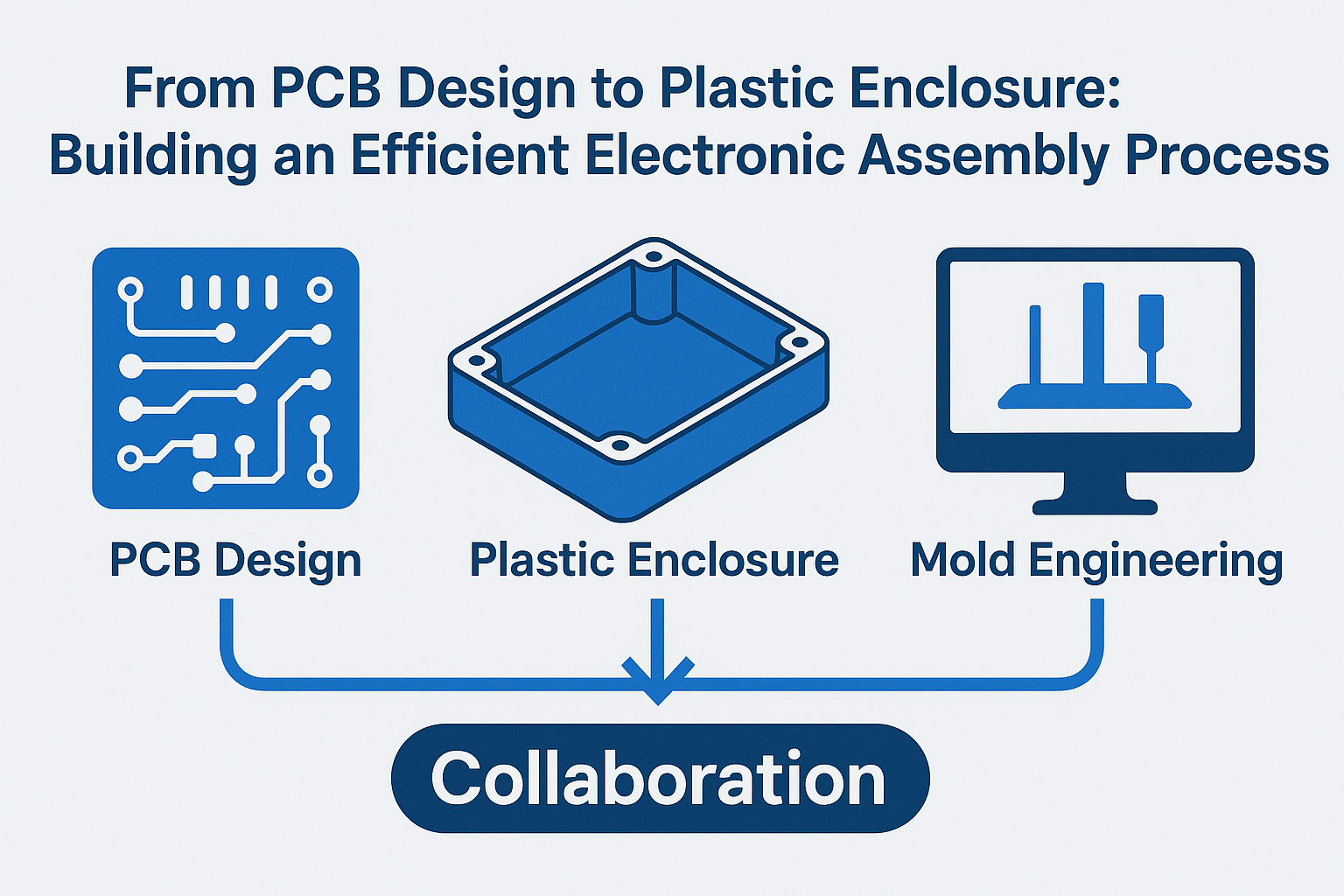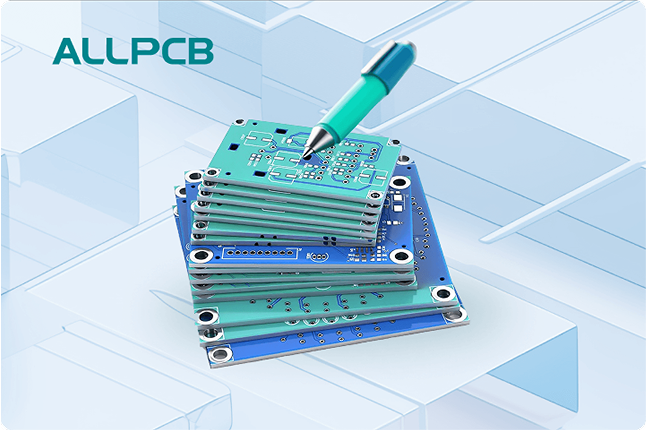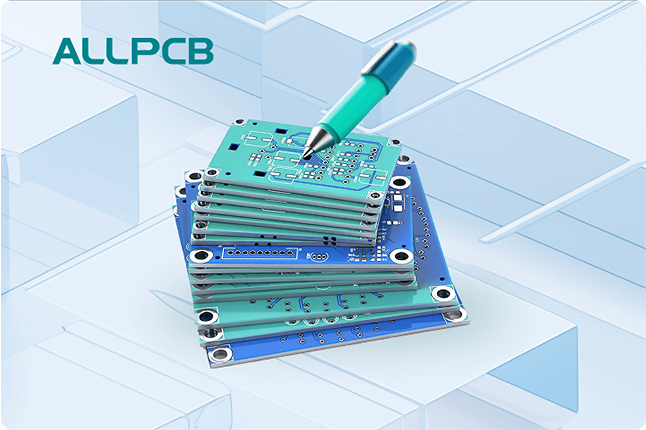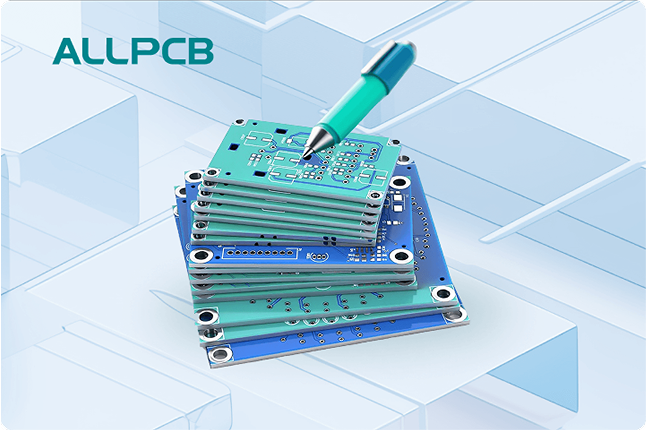If you're designing printed circuit boards (PCBs) for high-current applications, you might be wondering how to ensure efficient power distribution, solid grounding connections, and effective heat management. The answer lies in a powerful technique called via stitching. Via stitching plays a crucial role in high-current PCBs by enhancing grounding connections, improving thermal conductivity, and supporting overall board performance. In this blog, we’ll dive deep into what via stitching is, why it matters for high-current designs, and how it ties into grounding and thermal management. Let’s explore this essential topic step by step to help you optimize your PCB designs.
What Are Stitching Vias and Why Do They Matter?
Stitching vias are small holes drilled through a PCB and filled or plated with conductive material, typically copper. These vias connect different layers of the board, such as power planes, ground planes, or signal layers. Unlike regular vias used for routing signals, stitching vias are placed strategically in a grid or pattern to serve specific purposes like grounding, power distribution, or heat dissipation.
In high-current PCBs, where large amounts of current flow through the board, stitching vias are vital. They help reduce electrical resistance, minimize voltage drops, and ensure stable power delivery. Additionally, they strengthen grounding connections by creating low-impedance paths for return currents, which is critical for reducing electromagnetic interference (EMI) and maintaining signal integrity. Their role in thermal conductivity is equally important, as they help transfer heat away from hot components to cooler areas of the board or to a heat sink.
The Role of Via Stitching in High-Current PCBs
High-current PCBs are designed to handle significant electrical loads, often in power electronics, motor control systems, or industrial equipment. When currents exceed a few amperes—sometimes reaching 10A, 20A, or more—the traces and planes on a PCB must manage this load without overheating or failing. Here’s how via stitching supports these designs:
- Reduced Resistance: By connecting power planes across multiple layers with stitching vias, you create parallel paths for current to flow. This lowers the overall resistance, which can be critical in high-current designs. For instance, a single via might have a resistance of around 1-2 milliohms, but stitching multiple vias in a grid can reduce the effective resistance significantly.
- Even Current Distribution: Stitching vias ensure that current is distributed uniformly across power planes, preventing hotspots where excessive current density could cause thermal stress or component failure.
- Improved Power Integrity: Voltage drops are a common issue in high-current designs. Stitching vias help maintain a consistent voltage level across the board by providing multiple low-impedance connections between layers.
In a practical example, consider a PCB for a high-power LED driver handling 15A of current. Without stitching vias, the power plane might experience uneven current flow, leading to a voltage drop of 0.5V or more at certain points. Adding a grid of stitching vias near high-current components can reduce this drop to under 0.1V, ensuring stable operation.
Grounding Connections: Why Stitching Vias Are Essential
Grounding is a cornerstone of PCB design, especially for high-current and high-speed applications. A poorly designed ground system can lead to noise, EMI, and signal integrity issues. Stitching vias are a key tool for creating robust grounding connections. Here’s how they contribute:
- Low-Impedance Ground Paths: Stitching vias connect ground planes across multiple layers, creating a low-impedance path for return currents. This minimizes ground loops and reduces noise. For example, in a 4-layer PCB, stitching vias can tie the top and bottom ground planes together, ensuring a unified ground reference with impedance as low as 0.5 milliohms per via cluster.
- EMI Reduction: Electromagnetic interference is a significant concern in high-current designs, where switching components like MOSFETs generate rapid current changes. Stitching vias help contain these disturbances by providing a direct path for return currents to the ground plane, reducing radiated emissions.
- Signal Integrity: For mixed-signal designs, where analog and digital circuits coexist, stitching vias prevent ground bounce—a phenomenon where the ground voltage fluctuates due to rapid current changes. A well-stitched ground plane keeps the reference voltage stable, protecting sensitive signals.
Imagine a PCB for an industrial motor controller with high-current switching at 50 kHz. Without proper grounding, the switching noise could couple into nearby analog sensors, causing erratic readings. By placing stitching vias around the switching components and along the ground plane edges, you create a "shield" that confines noise and maintains clean signals.
Thermal Conductivity: Managing Heat with Stitching Vias
High-current PCBs often generate significant heat due to the power dissipation in traces, components, and planes. Overheating can degrade performance, reduce component lifespan, or even cause catastrophic failure. Stitching vias play a critical role in improving thermal conductivity and managing heat. Here’s how:
- Heat Dissipation: Stitching vias act as thermal conduits, transferring heat from hot spots on the board to cooler areas or to a heat sink. Copper, with a thermal conductivity of approximately 400 W/m·K, is an excellent material for this purpose. A grid of vias under a high-power component like a voltage regulator can reduce its operating temperature by 10-20°C.
- Connection to Thermal Planes: Many high-current designs include dedicated thermal planes or layers to spread heat. Stitching vias connect these planes to surface-mounted components or external heat sinks, ensuring efficient heat transfer.
- Preventing Thermal Runaway: In extreme cases, localized heating can lead to thermal runaway, where rising temperatures cause increased resistance, leading to more heat. Stitching vias help prevent this by distributing heat more evenly across the board.
For instance, in a power supply PCB with a surface-mount MOSFET dissipating 5W of heat, placing a 4x4 grid of stitching vias beneath the component can channel heat to an underlying copper plane, reducing the junction temperature from 120°C to below 100°C—a critical difference for reliability.
Best Practices for Implementing Via Stitching in PCB Design
Now that we understand the importance of stitching vias in high-current PCBs, grounding connections, and thermal conductivity, let’s look at some practical tips for implementing them effectively in your designs:
- Placement and Spacing: Place stitching vias close to high-current components, along the edges of power and ground planes, and near areas with high heat generation. A typical spacing for a via grid might be 0.5 to 1 inch, depending on the current density and thermal needs.
- Via Size and Count: Use vias with a diameter of 10-20 mils for most applications, ensuring they can handle the current load. For high-current designs, calculate the required number of vias based on current ratings—each via might handle 1-2A safely, so a 10A load might need 5-10 vias in parallel.
- Connect to Proper Planes: Ensure stitching vias connect only to the intended planes (e.g., ground to ground, power to power). Avoid accidental connections to signal layers, which could introduce noise.
- Thermal Reliefs: When connecting vias to large copper planes for heat dissipation, consider using thermal reliefs (small gaps in copper around the via pad) to prevent soldering issues during assembly. However, for maximum thermal conductivity, solid connections without reliefs are often better.
- Simulation and Testing: Use PCB design software to simulate current flow, thermal performance, and EMI before manufacturing. Tools can predict voltage drops, heat buildup, and noise issues, allowing you to optimize via placement.
Following these guidelines ensures that your high-current PCB design benefits fully from via stitching, achieving reliable performance and longevity.
Common Challenges and How to Overcome Them
While via stitching offers numerous benefits, it’s not without challenges. Here are some common issues designers face and how to address them:
- Manufacturing Costs: Adding numerous vias can increase drilling and plating costs during PCB fabrication. To manage this, prioritize via placement in critical areas and use larger via spacing where high density isn’t necessary.
- Board Space Constraints: In densely packed designs, finding space for stitching vias can be difficult. Focus on placing vias under components or in unused areas, and consider smaller via sizes if space is tight.
- Overheating During Soldering: Large via grids connected to thermal planes can act as heat sinks during soldering, making it hard to achieve proper solder joints. Using thermal reliefs or preheating the board during assembly can help.
By planning ahead and balancing performance with manufacturability, you can mitigate these challenges and make the most of via stitching in your designs.
Conclusion: Elevate Your High-Current PCB Designs with Via Stitching
Via stitching is a game-changer for high-current PCBs, grounding connections, and thermal conductivity. By creating low-impedance paths for current, reinforcing ground planes, and enhancing heat dissipation, stitching vias ensure that your PCB can handle demanding applications without compromising performance or reliability. Whether you’re designing for power electronics, industrial systems, or automotive applications, incorporating stitching vias into your layout is a step toward better efficiency and durability.
Start by identifying the high-current and high-heat areas of your design, then strategically place stitching vias to address those needs. With careful planning and adherence to best practices, you can optimize your PCB for power distribution, noise reduction, and thermal management. Take your designs to the next level with this powerful technique, and ensure your boards perform flawlessly under even the toughest conditions.
 ALLPCB
ALLPCB







